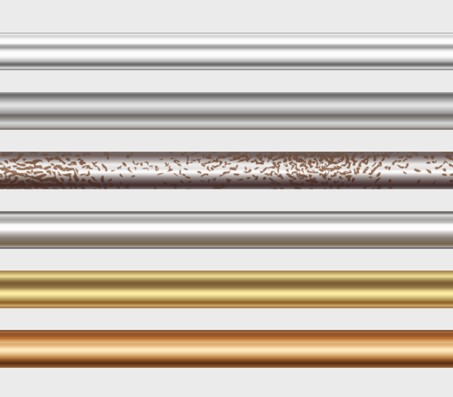Metallurgy Vs Rust Potential, some metals corrode faster

Did You Know
The difference between
rust and corrosion
Metals and Corrosion Cycle:
Copper and precious metals like gold, silver, platinum, etc. exist in nature in their original metallic state. All other metals including iron and aluminium are processed from ores into metals that are naturally unstable in their environments. All man-made metals are unstable and tend to convert back into their original stable mineral state. Some metals form protective passive films on their surfaces like aluminium and copper to prevent or slow down corrosion. Metal corrosion is caused because metals are used in environments where they are chemically unstable.
Some metals corrode faster than others in the galvanic series:
The galvanic series determines the electrochemical potential and nobility of metals and metal alloys. Each alloy or metal has a distinctive corrosion potential. The more negative a metal or alloy is, the more likely it is to suffer galvanic corrosion.
Corrosion is caused
because of chemically
unstable environments
Rusting is a part of corrosion,
but it specifically refers to the oxidation of
iron or its alloys
Rust Vs Corrosion
Corrosion:
Corrosion is a process that involves the decay of metals due to chemical or electrochemical reactions. Corrosion results in the formation of the oxides of metal or salts. The metal reacts with the surrounding environment, and over time, it loses its important properties and structure. Metals, when exposed to the environment, undergo oxidation and react with the oxygen present in the atmosphere.
The other factors that cause corrosion are moisture, salts, acids, bases, and other chemicals. Corrosion also occurs when metals are exposed to gases like acid vapours, formaldehyde gas, ammonia gas, and sulfur-containing gases. Some materials are resistant to corrosion, while some are prone to it.
Rust:
Rusting is a part of corrosion, but it specifically refers to the oxidation of iron or its alloys. Iron oxide is formed when rusting takes place either in the iron itself or in steel. In the presence of moisture and oxygen, iron undergoes a chemical or electrochemical reaction to form iron oxide. The colour of iron oxide is generally reddish-brown. When rusting occurs at one particular place in the metal, it gradually spreads across, resulting in the deterioration of the entire metal.
Corrosion in aluminum:
A thin layer of aluminium oxide forms over the surface of the metal, which acts as a protective barrier. This barrier does not flake off like rust does, which prevents further corrosion in the aluminium.
Corrosion in copper, brass, bronze, and similar metals: It produces a green coloured protective barrier known as patina.
Daubert offers a broad range of corrosion preventive coatings, oils, VCI liquids, VCI packaging materials, which have found to be very useful for protecting against Rust and Corrosion alike on ferrous and non-ferrous metals.
Recommended Additional Reads




